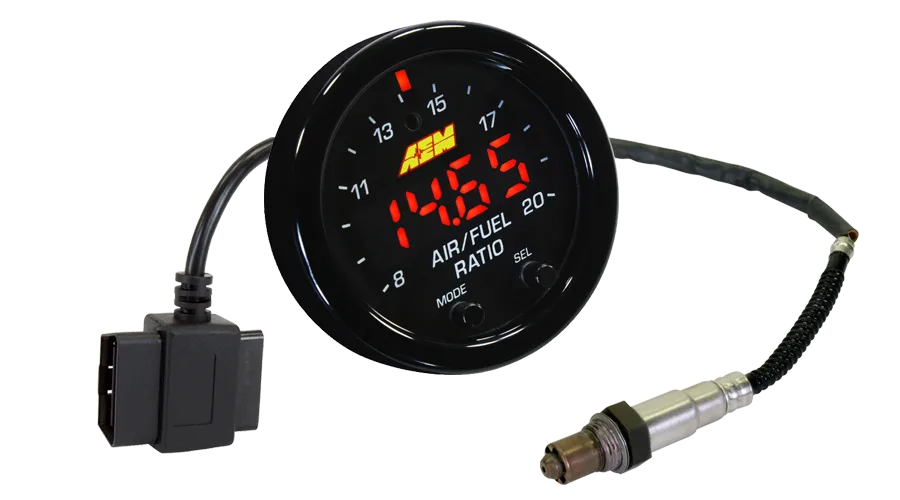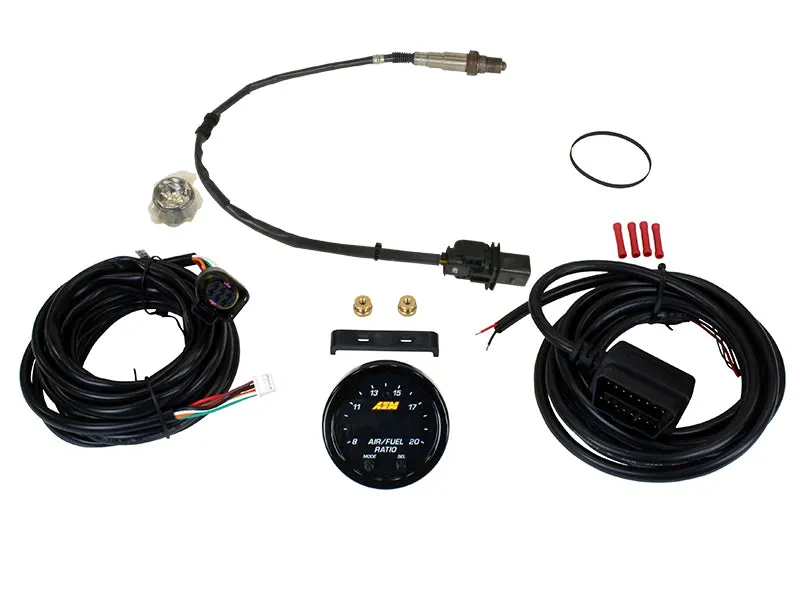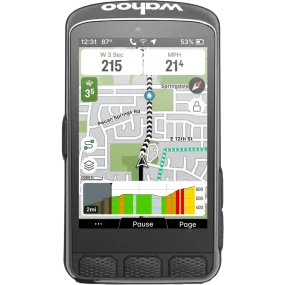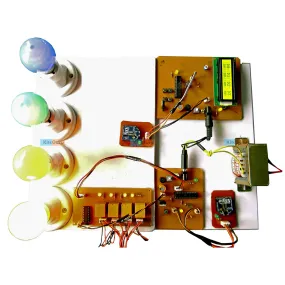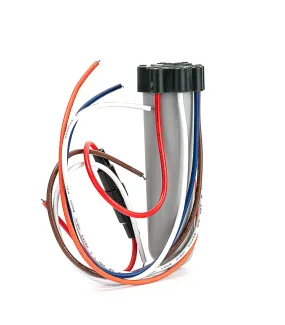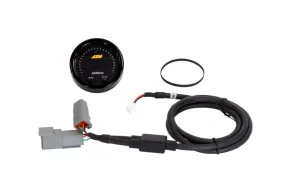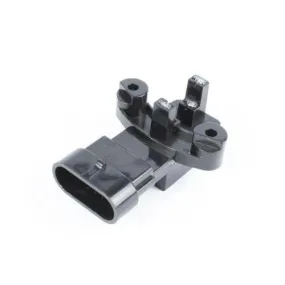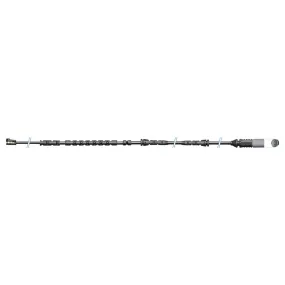Specs & Features
- The Fastest Responding Wideband AFR Controller
- Validated to work with EFI Live Flashscan V2 and HP Tuners software
- OBDII pass through provides AFR readings through the factory ECU CAN-bus – Ideal for users with piggyback programmers or open source tuning software
- Includes Bosch 4.9LSU wideband UEGO sensor
- Use the factory 02 calibration or free-air calibrate using buttons on faceplate
- Compatible with vehicle/system voltages up to 16V
- Optional outputs are AEMnet, 0-5V & RS232 for data logging and feedback control (requires wiring)
- Can display Lambda values to 2nd decimal
- 52mm gauge diameter and slim 0.825” gauge depth
- Gauge cup depth only .200” deep!
- Auto dimming feature
- User configurable display via buttons on the gauge face for changing AFR values, Lambda and O2%, 3- or 4-digit display and OBDII output settings (if necessary)
- Black bezel and black dual faced AFR/Lambda faceplate included (silver bezel/white gauge option sold separately, PN 30-0300-ACC)
- Locking connectors
Product Description
AEM's X-Series OBDII Wideband UEGO AFR Sensor Controller Gauge (PN 30-0334) provides tuners who are using piggyback tuning modules or open source software with the ability to view AFR through the factory CAN-bus stream that is output by the factory ECU, and deliver the most accurate, safe and powerful tune. The 30-0334 X-Series OBDII Wideband Gauge is validated to work with EFILive, HPTuners and DashDaq software.
The X-Series Wideband AFR OBDII Gauge includes an OBDII pass-through connector and Bosch 4.9LSU sensor that can be free-air calibrated or used with the factory resistor calibration. Additional wiring for a 0-5v or RS232 Serial output can be added by the user for outputting to a data logger. This OBDII pass-through capability replaces the traditional AEMnet stream available in the 30-0300 X-Series Wideband AFR Gauge Controller.
OBDII CAN-bus OUTPUT
The OBDII output simulates an auxiliary ECU signal when plugged into a vehicle’s OBD port, which requires a unique address from the other ECUs already on a vehicle’s network. AEM’s default OBDII CAN address will work with most popular vehicles and adjustments should not be necessary. However, AEM has provided OBDII address programmability through the buttons on the gauge face if a different address other than the default address is required, allowing users to program ECU #, Parameter Identification (PID), Message Identifier, and Bit Rate.




